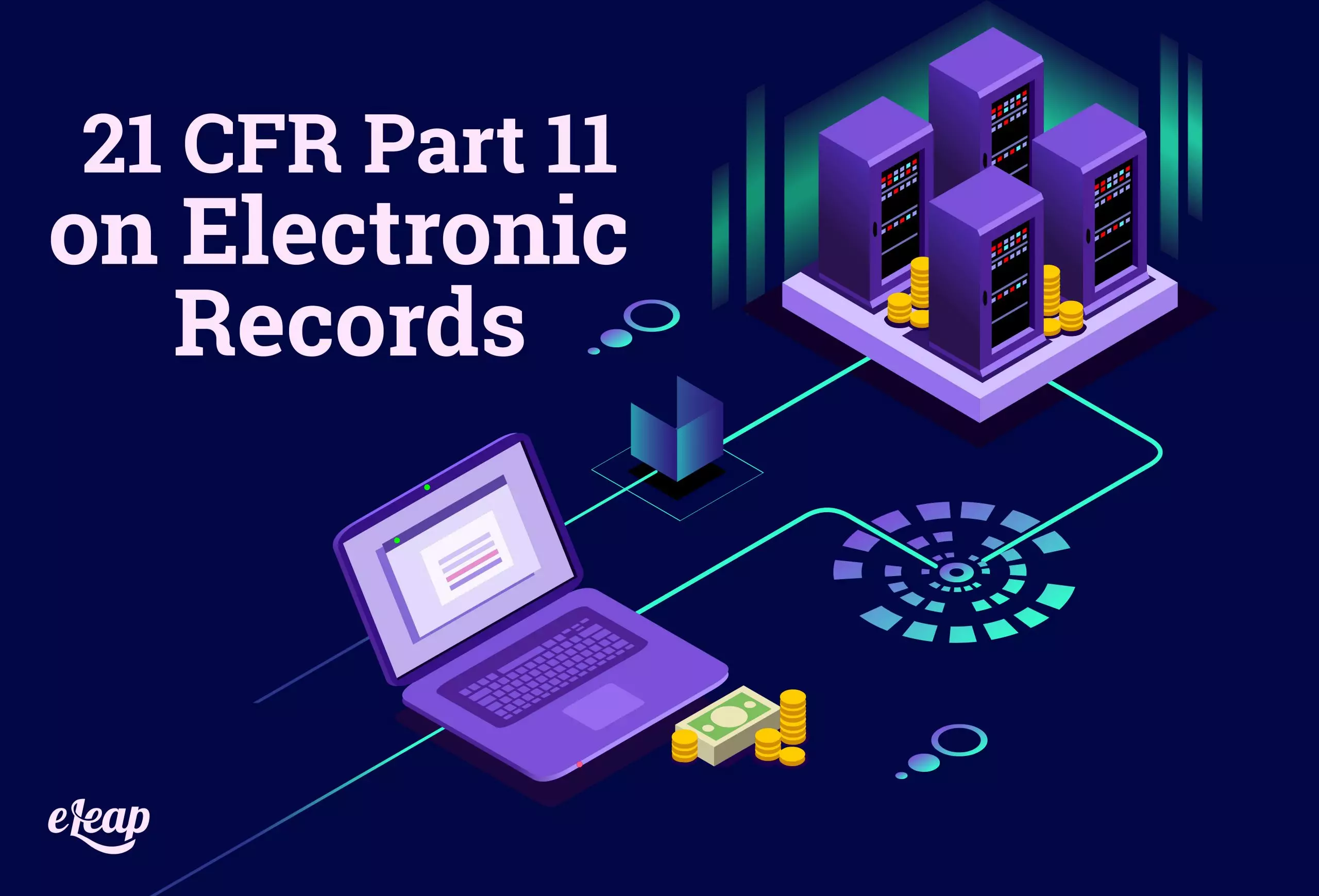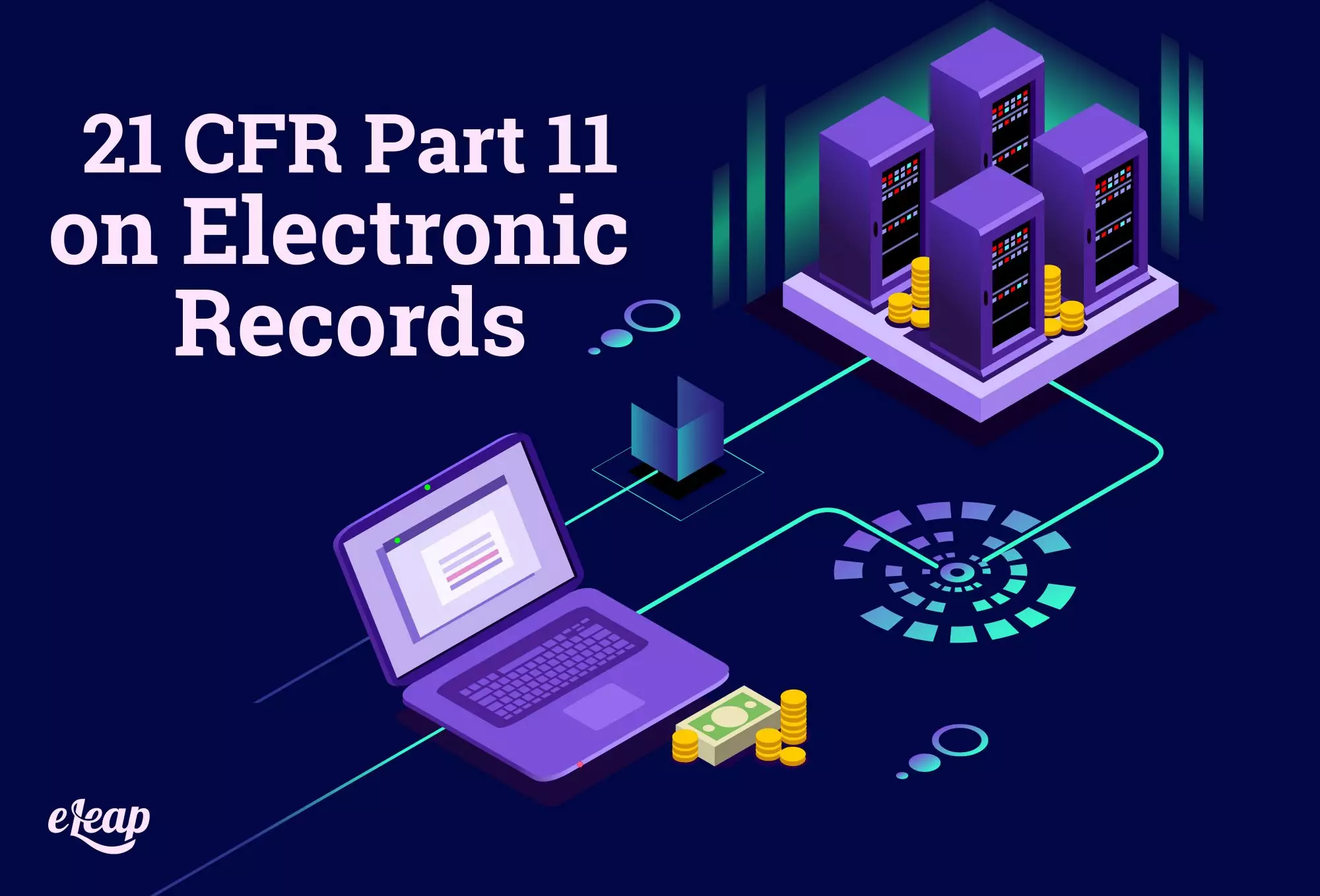21 CFR Part 11 on Electronic Records
Electronic Records Must Be Secure, Protected, and Compliant with FDA Rules

Struggling to comply with 21 CFR Part 11 on electronic records? Many life science companies find themselves in the same position. It’s a complicated set of rules and regulations that must be followed, and it applies to all electronic systems in your business, from your labeling to your learning management system. You can download the whitepaper, “How to Prepare for a 21 CFR Part 11 FDA Inspection“.

However, it doesn’t have to be as confusing as it might seem. In this guide, we’ll dive into what you need to know about electronic records and what compliance might look like.
What Are Electronic Records?
Under 21 CFR Part 11 on electronic records, the FDA defines it as, “any combination of text, graphics, data, audio, pictorial, or other information representation in digital form that is created, modified, maintained, archived, retrieved, or distributed by a computer system.” With this definition in hand, we can see that just about any sort of information stored within an electronic system used by your life science company fits the bill. That includes things like vendor correspondence, customer purchase orders, and even employee training documents.
How Are Electronic Records Stored?
Electronic records are stored within an electronic system. This can be a closed system – one in which you (the company responsible for maintaining and monitoring the records) have total control over access and security. It may also be an open system – one in which you (the company responsible for the records) does not have direct control over the information, such as in a cloud-hosted situation. In both system types, your records are digital – they’re stored either on a local hard drive or in remote storage within a data center.
How Long Must Electronic Records Be Maintained?
Speaking of record retention, the FDA explained in its 21 CFR Part 11 guidance document, “The Agency intends to exercise enforcement discretion with regard to the part 11 requirements for the protection of records to enable their accurate and ready retrieval throughout the records retention period (§ 11.10 (c) and any corresponding requirement in §11.30). Persons must still comply with all applicable predicate rule requirements for record retention and availability (e.g., §§ 211.180(c),(d), 108.25(g), and 108.35(h)).”
Can Electronic Records Be Changed to Physical Records?
Yes, you can change electronic records to physical records. In the same guidance document mentioned above, the FDA stated, “FDA does not intend to object if you decide to archive required records in electronic format to nonelectronic media such as microfilm, microfiche, and paper, or to a standard electronic file format (examples of such formats include, but are not limited to, PDF, XML, or SGML).
Persons must still comply with all predicate rule requirements, and the records themselves and any copies of the required records should preserve their content and meaning. As long as predicate rule requirements are fully satisfied and the content and meaning of the records are preserved and archived, you can delete the electronic version of the records. In addition, paper and electronic record and signature components can co-exist (i.e., a hybrid8 situation) as long as predicate rule requirements are met and the content and meaning of those records are preserved.”
How Does 21 CFR Part 11 on Electronic Records Affect Your LMS?
A modern learning management system is an electronic system, like your payroll and accounting software. It is designed to create, store, and maintain electronic records (training records related to your employee’s training and development). For that reason, it falls under the purview of 21 CFR Part 11, not just for electronic records, but also in terms of the FDA’s rules regarding electronic signatures.
What Records Are Stored in My LMS?
Today’s learning management systems are vast and varied. They can store any number of training record types, all of which must be maintained for a specific period. Some of the most common types of records include the following:
- Certification-related documents
- Continuing education (CE) related documents
- Corporate training-related documents
- Career advancement-related documents
What Do My LMS Records Have to Do with 21 CFR Part 11?
While it might not seem like your LMS falls under the scope of 21 CFR Part 11 for electronic records, it’s important to understand that the usage of the system and regulations that require your staff to be trained and to conduct their roles by knowledge and experience come into play here.
The Role of the Electronic Signature
While the focus of this guide has been on exploring 21 CFR Part 11 for electronic records, we must also mention electronic signatures, as they bear on the security and protection of electronic records. Your LMS will have electronic signature functionality that plays a role in a wide range of scenarios and situations, including the following:
- Learners must log in to their personal accounts to complete specific modules and have that completion recorded and credited to them.
- Administrators must log in to their accounts to make changes, alter documents, export records, and create learning paths.
- Users will have electronic signatures (logins) that tie into the need to create clear audit trails for accountability and responsibility.
Choosing an LMS for Your Life Science Company
Finding the right LMS is vital for compliance with the rules in 21 CFR Part 11 on electronic records and electronic signatures. Not all learning management systems today were designed with these regulations in mind, and some software developers may not have updated their existing platforms.
At eLeaP, we designed our LMS from the ground up to help our life science clients ensure compliance with 21 CFR Part 11 and other parts of 21 CFR. We offer advanced functionality, secure record storage, robust authentication, and other benefits you require. Contact us today to schedule a custom consultation to learn more about our learning management system and how we can support your organization.